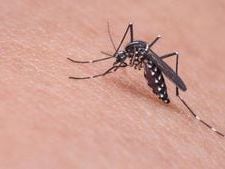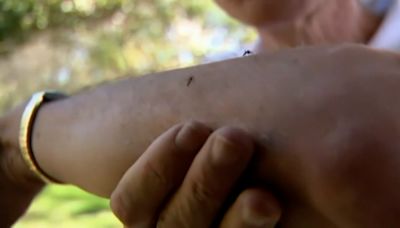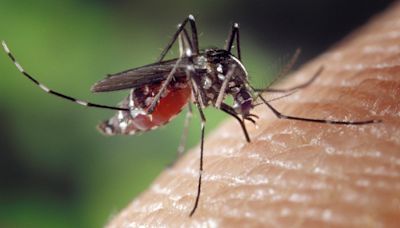Search results
Learn how West Nile virus is spread by mosquitoes and birds, and how it can rarely infect humans through blood or organ transplant. Find out the symptoms, prevention, and treatment of West Nile virus disease.
- Data and Maps for West Nile | West Nile Virus | CDC
West Nile Virus West Nile virus is primarily spread by...
- West Nile: Causes and How It Spreads | West Nile Virus | CDC
West Nile virus disease (West Nile) is caused by a virus...
- Data and Maps for West Nile | West Nile Virus | CDC
Jun 18, 2024 · Learn about West Nile virus disease, a nationally notifiable condition that affects humans and animals. View the current and historic data and maps of West Nile cases, mosquitoes, and other sources reported to CDC.
- Outbreaks
- Transmission
- Signs and Symptoms
- Diagnosis
- Treatment and Vaccine
- Vector and Animal Hosts
- Prevention
- Who Response
West Nile Virus (WNV) was first isolated in a woman in the West Nile district of Uganda in 1937. It was identified in birds (crows and columbiformes) in Nile delta region in 1953. Before 1997 WNV was not considered pathogenic for birds, but at that time in Israel a more virulent strain caused the death of different bird species presenting signs of ...
Human infection is most often the result of bites from infected mosquitoes. Mosquitoes become infected when they feed on infected birds, which circulate the virus in their blood for a few days. The virus eventually gets into the mosquito's salivary glands. During later blood meals (when mosquitoes bite), the virus may be injected into humans and an...
Infection with WNV is either asymptomatic (no symptoms) in around 80% of infected people, or can lead to West Nile fever or severe West Nile disease. About 20% of people who become infected with WNV will develop West Nile fever. Symptoms include fever, headache, tiredness, and body aches, nausea, vomiting, occasionally with a skin rash (on the trun...
West Nile virus can be diagnosed by a number of different tests: 1. IgG antibody sero-conversion (or significant increase in antibody titers) in two serial specimen collected at a one week interval by enzyme-linked immunosorbent assay (ELISA); 2. IgM antibody capture enzyme-linked immunosorbent assay (ELISA); 3. neutralisation assays; 4. viral dete...
Treatment is supportive for patients with neuro-invasive West Nile virus, often involving hospitalization, intravenous fluids, respiratory support, and prevention of secondary infections. No vaccine is available for humans.
WN virus is maintained in nature in a mosquito-bird-mosquito transmission cycle. Mosquitoes of the genus Culex are generally considered the principal vectors of WNV, in particular Cx. Pipiens. WNV is maintained in mosquito populations through vertical transmission (adults to eggs). Birds are the reservoir hosts of WNV. In Europe, Africa, Middle Eas...
Preventing transmission in horses
Since WNV outbreaks in animals precede human cases, the establishment of an active animal health surveillance system to detect new cases in birds and horses is essential in providing early warning for veterinary and human public health authorities. In the Americas, it is important to help the community by reporting dead birds to local authorities. Vaccines have been developed for horses. Treatment is supportive and consistent with standard veterinary practices for animals infected with a vira...
Reducing the risk of infection in people
In the absence of a vaccine, the only way to reduce infection in people is by raising awareness of the risk factors and educating people about the measures they can take to reduce exposure to the virus. Public health educational messages should focus on the following: 1. Reducing the risk of mosquito transmission. Efforts to prevent transmission should first focus on personal and community protection against mosquito bites through the use of mosquito nets, personal insect repellent, by wearin...
Vector Control
Effective prevention of human WNV infections depends on the development of comprehensive, integrated mosquito surveillance and control programmes in areas where the virus occurs. Studies should identify local mosquito species that play a role in WNV transmission, including those that might serve as a “bridge” from birds to human beings. Emphasis should be on integrated control measures including source reduction (with community participation), water management, chemicals, and biological contr...
The WHO regional office for Europe and WHO region of the Americas are intensively supporting WNV surveillance and outbreak response activities respectively in Europe and in North America, Latin America and the Caribbean, together with country offices and international partners.
West Nile virus is a flavivirus that is mainly spread by mosquitoes biting infected birds and people. It can also be transmitted by blood transfusion, organ transplantation, and mother to baby, but rarely.
Jul 3, 2023 · Learn how West Nile virus is transmitted by mosquitoes and other means, and what are the signs and complications of infection. Find out how to protect yourself and get tested for the virus at Mayo Clinic Laboratories.
How do you get West Nile virus? Infected mosquitos transmit West Nile virus. They usually get the virus by biting an infected bird (there’s no evidence humans get it directly from birds). The virus multiplies inside the mosquito, and it’s transmitted to you (or another animal) when it bites you.
Learn how West Nile virus is spread by mosquitoes and can cause serious illnesses, such as encephalitis and meningitis. Find out how to prevent mosquito bites and protect yourself from the virus.








